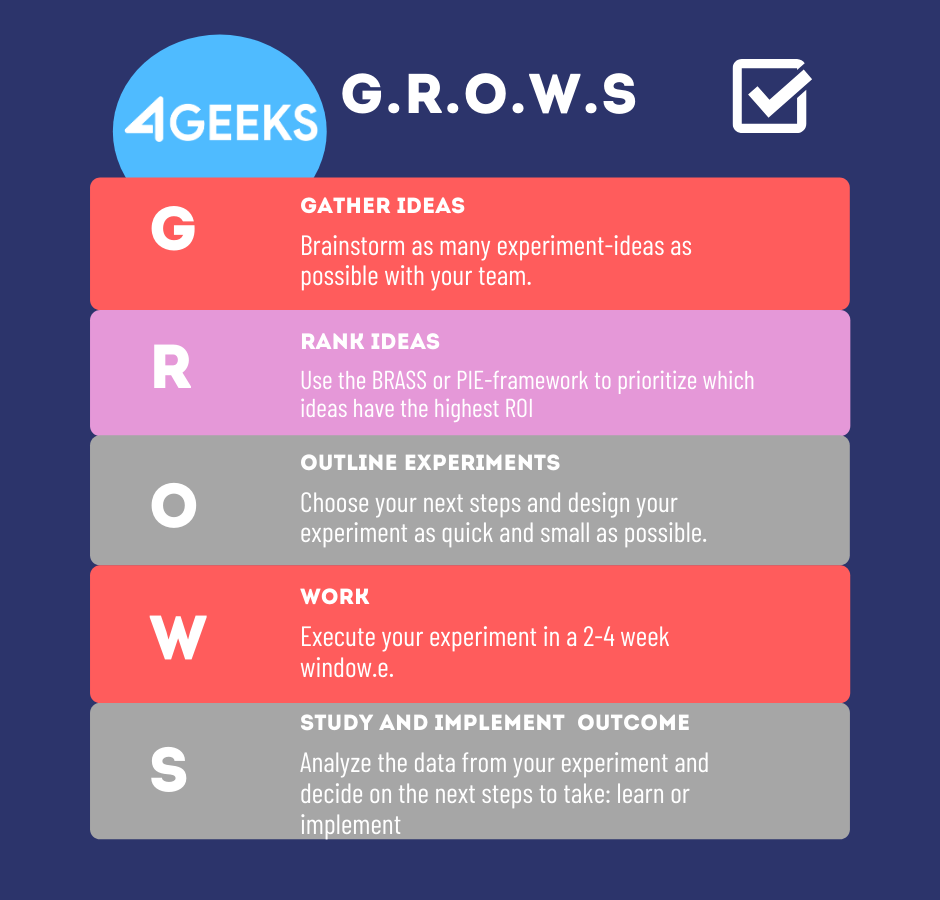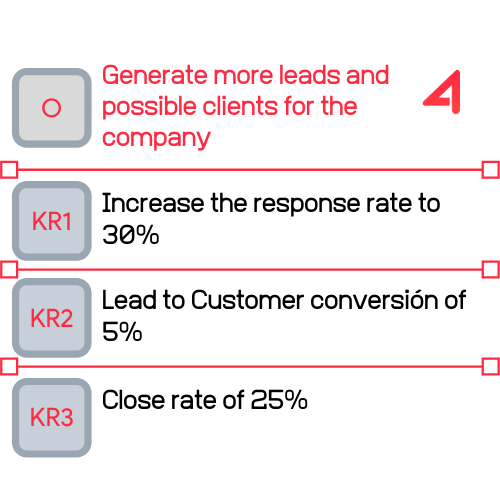Growth Hacking: The Ultimate 5 Step Guide

But after we start talking about all the great stuff that comes with growth hacking it is really important to understand the task and the main goal that has growth hacking in a new business.
What Is Growth Hacking?
Growth hacking was first coined by Sean Ellis in 2010. He was hired by multiple businesses to achieve growth in short periods of time. Part of the task was setting up processes, and changing mindsets. The ideal goal was that the company could maintain the process of growing without him.
The problems came when he was trying to find his replacements, basically all the CV’s that he received were for marketers. With great experience and set of skills but not quite the right fit. When he realized that a growth hacker is not a marketer, he coined the term “growth hacking. In his own words a ”“Person whose true north is growth”. And maybe that’s the main difference with marketers
While marketers have multiple goals and usually try to keep up with corporate goals. Growth hackers make startups grow in short periods of time. So while a growth hacker mind revolves around strategies, tactics and innovative initiatives in the hope of growing. Marketers usually have other things on the top of their minds. Like product sales strategies and branding. Growth hackers are not necessarily a replacement for marketers is just different focuses of attention. And also different business sizes.
5 Commands To Start Growth Hacking:
1. Create the Growth Hacking Mindset
The growth hacker mindset is something that maybe some people could have inherently in their life, because they can see stuff or tricks that nobody else sees with clarity. Or it can be worked on. If you’re trying to create this mindset to improve your business take the following tips.
Speed Is More Important Than Perfection:
The value of growth hacking is the ability to start doing little experiments and see what works well and what can be a failure from the start. People use the G.R.O.W.S process for growth hackers to run experiments. Let’s take a look of the framework.

According to the website, growing with ward on average only 1 in 10 experiments becomes a huge success. So don’t be sad if the first set of experiments don’t give you the wished results. Another hack that you should consider is having an open mind. Lets see some cases of success using growth hacking:
Groupon: When groupon decided to used social psychology: Groupon is a website dedicated to the use of online coupons. You can use Groupon to get deals up to 70% on all sorts of things, they give you coupons from food to travel services. When I say they decided to use psychology it’s because Groupon decided to put how many items they have in stock or how soon some deals would expire. What they accomplished with this?. They created a sense of urgency to buy or they could lose some lucrative offer.
They also took this technique one step further. For some deals to work there was a minimum number or people to buy the deal, also decided to put a limited quantity available. They were really creative in the use of consumer psychology because they not only created a sense of urgency but also, clients have to spread the word about the deal to work.
2. Find a Product-Market Fit before Growth Hacking
One of the first steps before starting to create growth hacking strategies is recognizing the product market fit. Only once you know your idea makes senses and that you have identified the problem you’re solving and the market you’re solving it for. You should start with growth hacking. It’s a reality when a product market fit isn’t happening. Probably the customers aren’t getting the value of the product and most probably the reviews that have been received are really bland.
You have to keep in top of your mind, that the right market fits is about realizing how significant the problem is for your target market. And considering that if the problem you’re trying to solve is not big enough or people don’t care about it too much, you’re missing out on the whole ideology.
3. Data-driven Choices Instead Of Gut Feeling
Before data analysis with sophisticated tools existed, marketing decisions were based on the gut feeling. What kind of tv programs is my consumer watching or which newspaper they read. Nowadays growth hackers tend to work really differently. Now they focus on the basis of figures and data, how the micro conversions are working on and watching closely how in dark funnels the data is flowing.
One of the things growth hackers are most valued for are the north they have, usually they focus on only real goals, being skyrocketing the growth in the company. It’s really usual they measure the One Metric That Matter (OMTM). All right with this metric exist thousands of suitable metrics that can work, but usually this can vary according to the size of the company. Let’s see some examples for startups:
- Number of website visitors per month
- Average click-through percentage from homepage to checkout.
- Retention of new customers after seven days.
4. Find Offbeat Channels
Most marketers use the most common channels to make promotions: Facebook, LinkedIn, Twitter and Instagram. But these ones are usually really saturated with promotions or social ads, and with time people just start ignoring. To start growth hacking you need to start searching channels that not are totally saturated. Usually offbeat channels get better results with less time and money. Here is an example:
Content Upgrades: So one part of every sales funnel is collecting information from your leads, usually your Name, Last Name and the most important email. So what many companies do is offer some content upgrade to collect this data.
The idea comes with the task of making blogs, or content. And at the end of the post the client could realize that the blog that you were just reading was just a preview. The possible customer just has to click a button to download a more detailed white paper or ebook to learn more.
4Geeks created more than 200 blogs about different topics . From marketing strategies to how to get your own remote team. And offers content upgrades to watch webinars or to get free whitepapers. Other companies used content upgrades to get more leads in the past for example: BackLinko increased their conversion rate by 785% just by implementing cheat sheets.
Airbnb Strategy:
Another great example of finding offbeat channels was the ridiculously successful strategy used by Airbnb. They provided a feature on Airbnb to simultaneously post on their biggest competitor Craigslist. Amazing huh?
This was a genius move if you think about it. They didn’t have a massive customer base like Craigslist. What happened was that when the Craiglist users viewed the property were allowed to contact the owners only if they have an account on Airbnb. So their customer base started moving. Also new clients noticed that Airbnb listings were far more superior and they have nicer photographs and overall more trustworthy.Some people even claim that the rest is history. This only simple hack was responsible for most of Airbnb’s success.
5. Experiment Until You Find The Right Hack
For every experiment you do, you have to establish a framework, mostly because it’s important to keep a record of every experiment the team is doing. And because it is important to know how to create a scalable and repeatable process to execute.
7 Steps to Start Growth Hacking:
Here i’m going to show the basis of a seventh step experiment to implement your growth hacking ideas
- Define Objectives and Key Results (OKRs): So this is the easy step, objectives are the goals you expect to achieve and key results are the metrics, the ideal is these key results to be time bound and measurable milestones.

- Brainstorm Ideas: Next make a reunion with your team to brainstorm all the possible ways to accomplish your new set of goals. The main idea with this is taking possible solutions from a variety of different minds. In theory you could obtain a wider array of different ideas. Or maybe even look outside its industry and see how other marketplaces are increasing their sales or what strategies are implementing.
- Prioritize: Following the brainstorming session you should focus on the ideas that could work. Here is some advice for choosing the ideas. Questions yourself ¿ What’s the probability that it will work? Is it worth trying, considering the effort that could bring. Another question you could ask yourself is, What’s the potential impact?. In this section you need to consider your hypothesis and take into account the long lasting effects that could bring into the experiment, versus the first impact.
- Test: With this step of the plan the first step is implementing a hypothesis, here are some tips to establish one without trouble. The question comes first. What are you interested in studying?. After that what follows is making the hypothesis. This one is an educated, and testable prediction about what could happen.
One thing to keep in mind and maybe the most important at the time to establish one hypothesis is that it is testable. This means that you can prove or disprove your hypothesis. You need to be able to make measurements and repeat the experiment if necessary. - Implementation:The step is basically execute, execute and execute. Some growth hackers recommend running the experiments in sprints of 7 days each and then measure your experiment metrics after each sprint.
- Analyse: What we learn with this experiment.How accurate was your hypothesis?. what did you learn?. These are the kind of questions you may ask yourself before document your findings.
- Systemize: When you finish performing your experiment, and if it is successful. It is important to make a document where all the steps are established in order to create a repeatable and scalable process.






